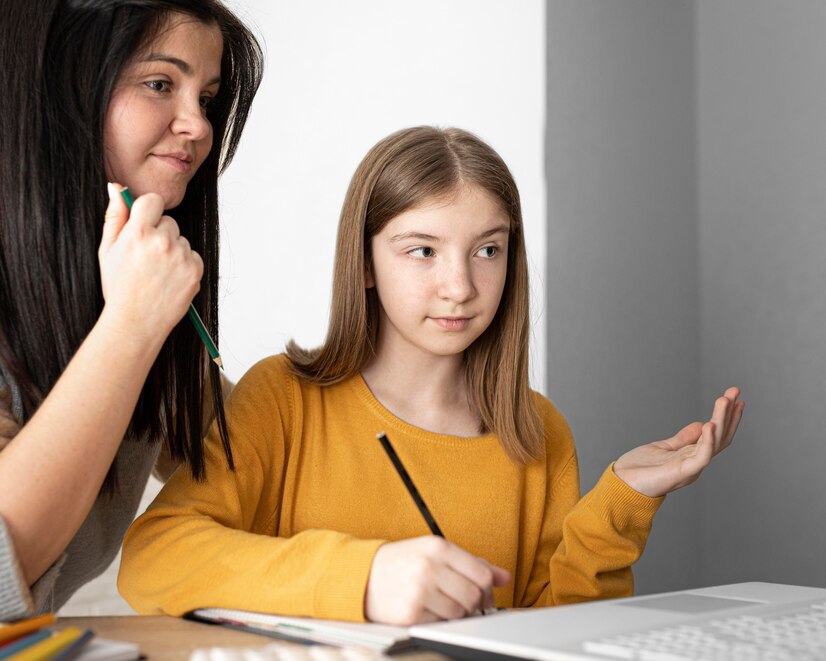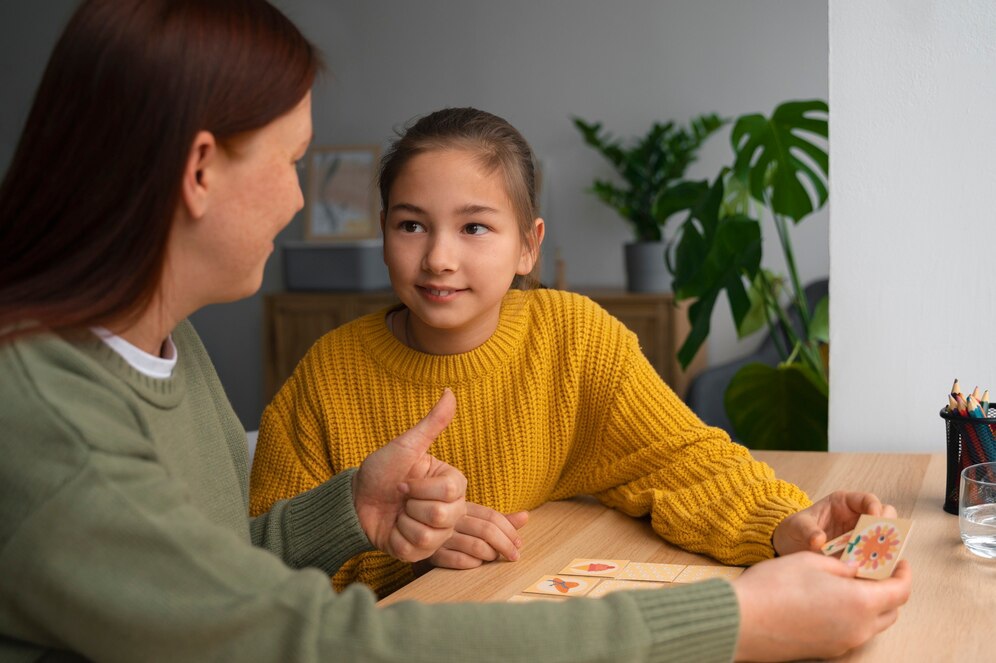
Teaching Kids About Consent and Personal Boundaries
A New Kind of Growing Up
The word “puberty” often conjures up images of physical changes — acne, growth spurts, maybe a moody teenager grunting from behind their bedroom door. But one of the most important parts of growing up is less visible: learning how to navigate relationships.
As children move into their tween years, they begin forming deeper friendships, start noticing romantic feelings, and crave more independence. This is the ideal time to introduce the concepts of consent and personal boundaries — long before dating begins, and while their values are still forming.
In this guide, you’ll learn how to approach these conversations with confidence and warmth. We’ll explore why consent and boundaries matter during puberty, how to teach them in age-appropriate ways, and how to build a foundation of trust that encourages your child to speak up, listen well, and respect both themselves and others.
What Are Consent and Personal Boundaries?

Understanding Consent
At its simplest, consent means permission. It’s about choosing freely and clearly — and respecting others when they do the same.
Real consent is:
- Freely given (not pressured or guilted)
- Reversible (a person can change their mind anytime)
- Informed (everyone knows what they’re agreeing to)
- Enthusiastic (not hesitant or unsure)
- Specific (saying yes to one thing doesn’t mean yes to everything)
These five elements — known as the FRIES model — can help kids understand consent beyond just saying “yes” or “no.”
What Are Personal Boundaries?
Boundaries are the lines we draw to protect our physical space, emotions, and well-being. They help us:
- Know what we’re okay with
- Communicate our comfort levels
- Keep relationships respectful and safe
Personal boundaries include:
- Physical boundaries (e.g. hugs, personal space)
- Emotional boundaries (e.g. not sharing private thoughts if you’re not ready)
- Social boundaries (e.g. who they hang out with and how they want to spend time)
- Digital boundaries (e.g. who they share photos or passwords with)
Why Teaching Consent Early Matters
It Empowers Kids
Understanding their rights to say “no” (and to hear “no”) gives children a sense of control. They learn that:
- Their body belongs to them.
- Their feelings are valid.
- It’s okay to set limits, even with adults or friends.
It Builds Healthy Relationships
When kids learn to communicate clearly and listen respectfully, they’re more likely to:
- Avoid peer pressure
- Stand up for others
- Recognise when a relationship isn’t safe or kind
It Prevents Future Harm
Teaching consent isn’t just about preventing assault, though that’s a critical benefit. It’s about equipping young people to understand respect, reduce misunderstandings, and create consensual cultures in schools, friendships and later on, romantic relationships.
When and How to Start the Conversation

Start Young, Build As You Go
The best time to talk about consent isn’t during a crisis or when something goes wrong. It’s part of everyday life.
You can start introducing these ideas as early as age 3–5 with:
- “Ask before hugging someone.”
- “It’s okay if you don’t want to be tickled.”
- “No means no — even in games.”
By the time they reach 8–12, you can expand into:
- Handling peer pressure
- Digital safety and privacy
- Respecting others’ boundaries
- Speaking up if something feels wrong
Everyday Moments to Talk About Consent
Look for teachable moments:
- Watching TV shows where boundaries are ignored — “How do you think she felt when he didn’t listen?”
- When siblings argue — “Did you ask before taking their toy?”
- When they say “no” and someone ignores it — “Was that respectful? How could we handle that differently?”
Keep it light, regular, and open-ended.
Practical Ways to Teach Consent and Boundaries
1. Model It Yourself
Children learn more from what you do than what you say. Show them that you respect boundaries by:
- Asking if they want a hug instead of assuming
- Honouring their “no” when they decline physical affection
- Saying “no” to yourself, calmly and clearly, to model boundary-setting
You can also narrate your own choices:
“I don’t feel like hugging today, but I’m happy to chat with you.”
This teaches that saying no doesn’t mean rejection or rudeness.
2. Use Age-Appropriate Language
Make it relatable. Use analogies or examples like:
- “If you were playing a game and someone said stop, what would you do?”
- “Your body is like your room — no one goes in without permission.”
Books and shows that tackle consent in gentle, story-driven ways can also help children process the message in a safe context.
3. Teach the Power of “No” and “Yes”
Practice using both:
- “What would it sound like if you said ‘no’ and someone didn’t stop?”
- “Let’s think about how to ask someone if they’re okay with something, like sharing your snack or choosing a game.”
Roleplay scenarios. Keep it fun, not scary.
4. Talk About Peer Pressure
Consent isn’t just physical — it also shows up in group settings:
- Choosing not to join in on teasing
- Saying no to a dare or a prank
- Respecting when a friend needs space
Ask:
“What would you do if your friend asked you to do something you weren’t comfortable with?”
Let them come up with answers, and help them build language for boundary-setting:
- “I don’t feel right doing that.”
- “Let’s try something else.”
- “I’d rather not — thanks for understanding.”
5. Explore Digital Boundaries
Online life introduces a whole new set of challenges:
- Should they share passwords?
- What’s okay to post about a friend?
- How do they handle pressure to send photos or click unsafe links?
Teach them that digital consent matters just as much as in-person consent.
Tips to offer:
- “Always ask before posting a photo of someone else.”
- “Don’t feel guilty about leaving a group chat or turning off notifications.”
- “If someone pressures you online, come talk to me.”
Common Challenges (And How to Handle Them)

What If They’re Too Embarrassed to Talk?
You might get the dreaded eye roll or, “Ugh, Mum, that’s gross!” That’s okay. Stay calm, light-hearted, and keep the door open.
Say:
“I know this stuff can feel awkward — I’m here when you’re ready.”
You might also leave them a note, a book, or a podcast recommendation if they’d prefer space to explore the ideas.
What If They Disrespect Others’ Boundaries?
Use it as a teaching moment, not a punishment:
“When you kept tickling after she said stop, how do you think she felt?”
Then guide them through the repair:
“Can you apologise and ask how to make it right?”
This teaches accountability — a key part of respectful relationships.
What If They’re Hurt by Someone Ignoring Their Boundaries?
Listen without rushing in to solve.
Say:
“That sounds really upsetting. I’m glad you told me.”
Then help them process:
- “What would you like to do next?”
- “Do you want me to talk to someone, or help you figure out what to say?”
Reassure them that their boundaries matter and that it’s never too late to speak up.
Tools and Resources to Support the Journey
Helpful Books
- Let’s Talk About Body Boundaries, Consent and Respect by Jayneen Sanders
- Consent (for Kids!) by Rachel Brian
- Respect: Consent, Boundaries and Being in Charge of YOU by Rachel Brian
Age-Appropriate TV and Video
- Pantosaurus (NSPCC video for younger kids)
- Bluey, Hey Duggee, and even some episodes of Modern Family can show boundary issues in action.
- YouTube channels like Amaze.org for tweens and early teens
Conversation Starters
- “What would you do if a friend kept bothering you after you said no?”
- “Is it ever okay to change your mind about something you agreed to earlier?”
- “Do you think people always know when they’ve crossed a boundary?”
Conclusion: Teaching Kids to Be Brave, Kind, and Safe
Raising kids who understand consent and personal boundaries isn’t just about protecting them — it’s about empowering them. It helps them trust themselves, speak up, and treat others with care.
And the good news? You don’t need to get it perfect. You just need to be present, curious, and willing to have the conversations — even when they’re awkward.
Start small. Ask questions. Listen more than you talk. And keep the message clear: Your body, your space, your choice — always.
What’s helped you teach consent and boundaries to your child? Share your ideas or challenges in the comments — your story could be just the inspiration another parent needs.


